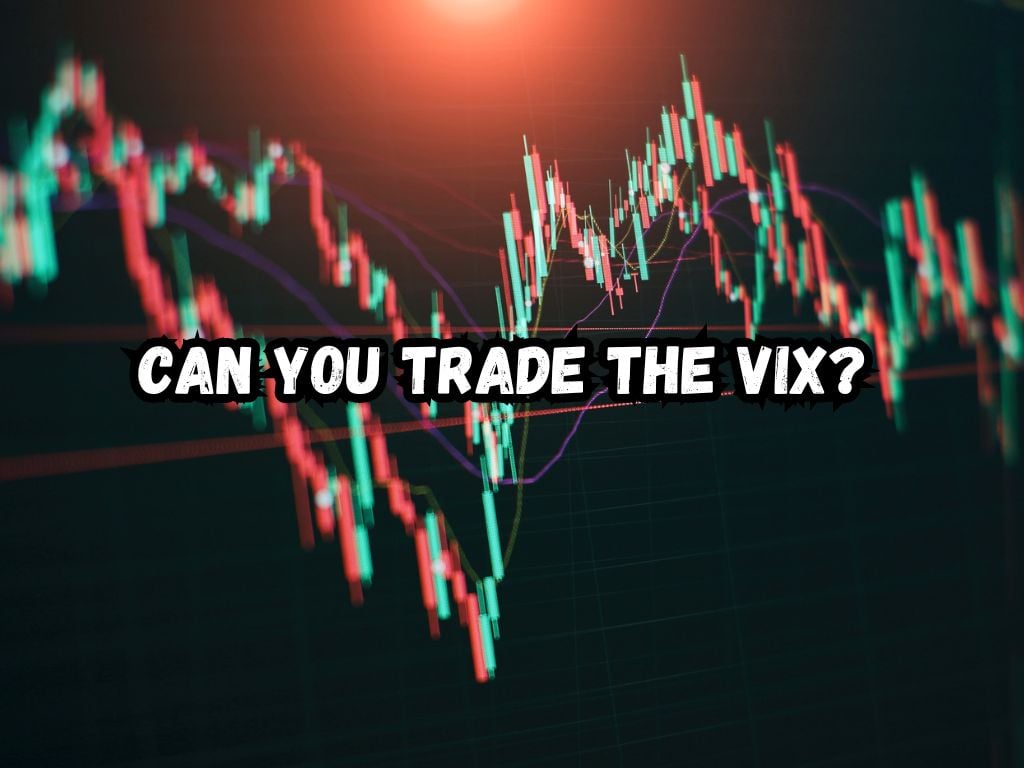The Volatility Index, more commonly known as the VIX, is a real-time market index that represents the market’s expectation of 30-day forward-looking volatility.
Derived from the price inputs of S&P 500 index options, it provides a measure of market risk and investors’ sentiments regarding the future.
But, can you trade the VIX?
Understanding how to trade the VIX is crucial for investors looking to navigate through market volatility successfully.
What is the VIX?
Definition and Purpose of the VIX
The VIX is often referred to as the “fear gauge” or “fear index” of the market, offering insight into the levels of stress in the markets at any given time.
Its primary purpose is to measure the market’s expectation of volatility over the coming 30 days.

The History and Calculation of VIX
Introduced by the Chicago Board Options Exchange (CBOE) in 1993, the VIX has evolved to become a standard for measuring market volatility.
The index is calculated using a wide range of S&P 500 index options, both puts and calls, spanning a wide range of strike prices.
How the VIX Reflects Market Sentiment
When the VIX is high, it indicates an increase in fear among investors, expecting higher volatility. Conversely, a low VIX points to investor confidence in the ongoing market conditions.
Can You Trade the VIX Directly?
The VIX itself is an index, and like other market indexes, you cannot trade it directly. However, various financial instruments have been developed to allow investors to trade based on VIX movements.
How to Trade the VIX
Trading VIX with ETFs and ETNs
Exchange-Traded Funds (ETFs) and Exchange-Traded Notes (ETNs) offer straightforward ways to trade the VIX.
These instruments track the VIX index and are traded on stock exchanges. It’s vital to understand that these products may not perfectly match the performance of the VIX.
VIX Futures
VIX futures are contracts that represent the market’s view of the VIX level at various expiration dates in the future. These are complex instruments that require a good understanding of the futures market.
VIX Options
VIX options give investors the opportunity to trade volatility without having to factor in the price movements of underlying stocks. These options are based on the VIX futures, making them one degree removed from the VIX index itself.
Factors to Consider When Trading the VIX
When trading VIX-related products, it’s important to consider liquidity, volume, and risk management. These factors will greatly influence the success of your trades.
Strategies for Trading the VIX
Hedging with the VIX
Investors often use VIX-related products to hedge against their portfolios. A higher VIX can offset potential losses in a turbulent market.
Speculating on Market Volatility
For those looking to profit from volatility, trading the VIX can be a lucrative strategy. It requires a keen understanding of market trends and a careful strategy.
Timing and Seasonal Trends
Understanding how the VIX behaves during different times of the year or under varying economic conditions can offer profitable trading opportunities. Historical data and technical analysis play crucial roles here.
Tips for Successful VIX Trading
Monitor Global News and Events
Global events have a significant impact on market volatility. Staying informed can help you anticipate movements in the VIX.

Technical Analysis Tools for VIX
Use technical analysis to identify trends, support, and resistance levels in the VIX. These tools can guide your trading decisions.
Avoiding Common Mistakes
Many traders fail because they do not manage risk adequately or they misinterpret what the VIX is telling them. Understanding the limitations and characteristics of VIX-related products is crucial.
Frequently Asked Questions
Is Trading the VIX Suitable for Beginners?
Trading the VIX can be complex and may not be suited for all beginners. A thorough understanding of how volatility works is necessary before starting.
How Does the VIX Correlate with Market Crashes?
Typically, the VIX spikes during market downturns as investors anticipate increased volatility. It’s a useful indicator for gauging market stress.
Can You Buy and Hold VIX Instruments Long-Term?
Most VIX instruments are designed for short-term trading due to their structure and the nature of volatility they represent. Long-term holding is generally not advisable.
What is the Time Decay in VIX Products and How Does it Affect Trading?
Time decay affects VIX futures and options as they approach expiration. This decay can erode profits if not strategically managed.
Conclusion
Trading the VIX can be a valuable strategy for those looking to hedge against market volatility or speculate on future market movements.
However, it requires a solid understanding of the mechanisms behind VIX-related products and a careful approach to risk management.
By monitoring global events, employing technical analysis, and staying informed about market trends, investors can navigate the complexities of VIX trading effectively.
Remember, the key to successful VIX trading lies in preparation, knowledge, and caution. With these guidelines in mind, you’re better equipped to explore the opportunities that volatility trading offers.


 Tags:
Tags:










